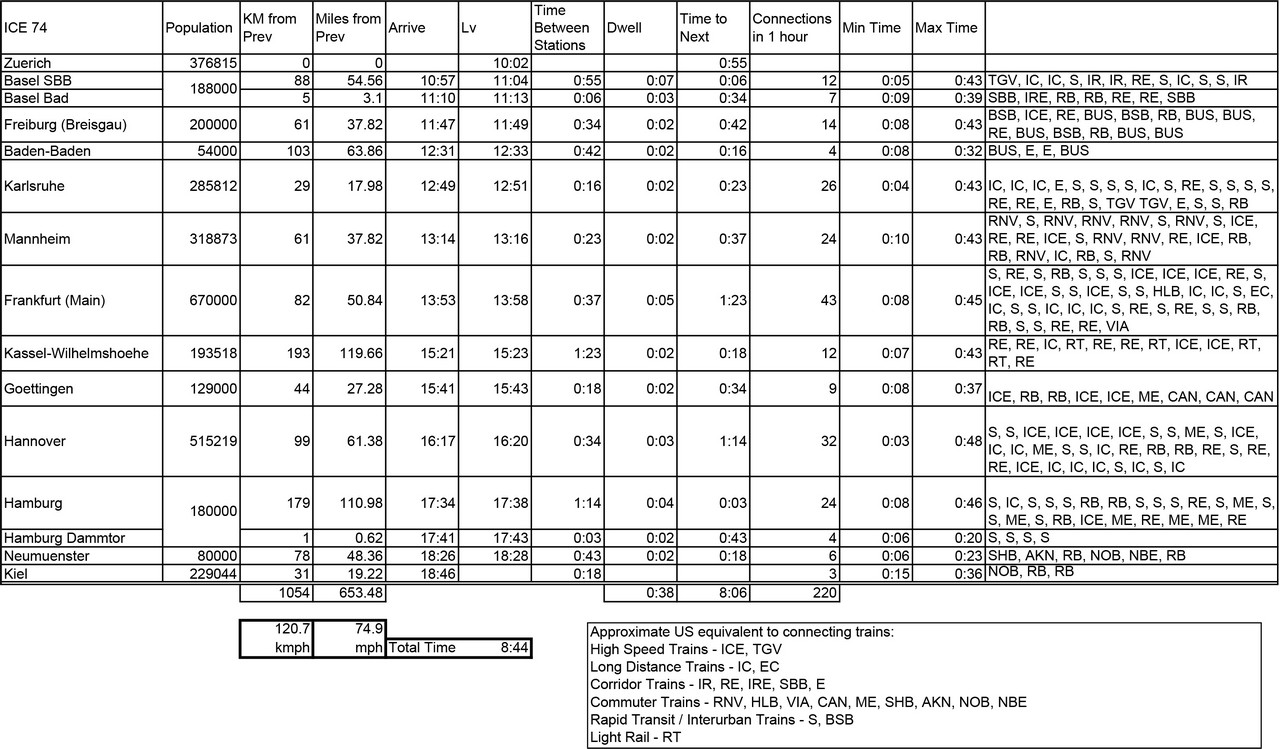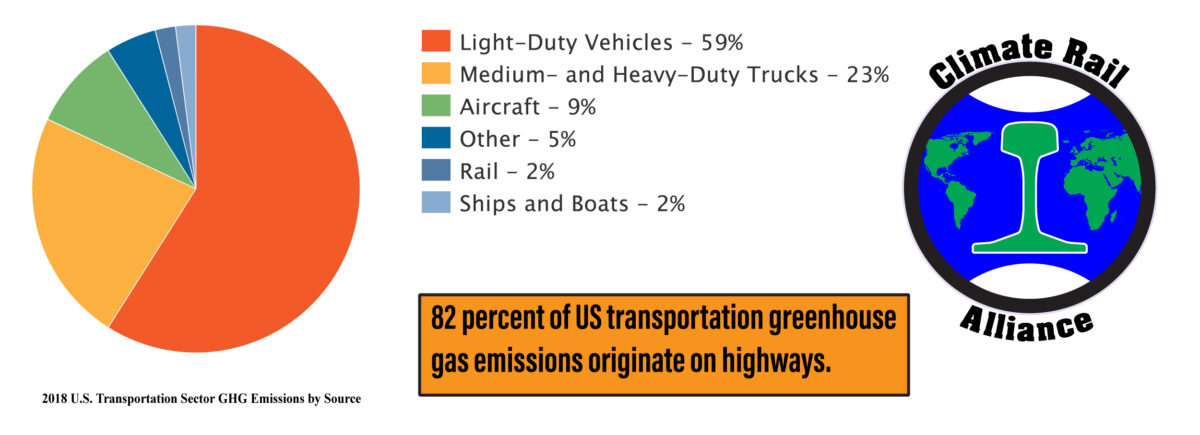High Speed Rail is a hot topic in the US. It seems that everyone wants high speed trains because everyone else has high speed trains.
Not everyone else is riding high speed trains.
- Three countries have trains that have a maximum speed of up to 150 mph.
- Ten countries have trains that have a maximum speed of over 150 mph.
- 18 percent of high speed trains have a maximum speed of 186 mph.
- Eight percent of high speed trains have a maximum speed of over 186 mph.
- 20 percent of rail passengers use high speed trains.
- Every country that has High Speed Rail first developed the conventional rail network to the extent possible, providing a robust transportation network to which HSR passengers can connect.
This example shows the connections for a single German ICE high speed train between Zurich and Kiel.

- The time between stations ranges between six minutes and 1 hour 23 minutes.
- Average speed is 75 mph.
- Maximum speed is 150 mph.
- This train operates on an improved conventional line, shared with freight, long distance passenger, regional, commuter, and even…light rail (which would never be allowed in the US, or at least under current regulations).
- This train connects with 215 trains and five bus routes.
- Connecting time is as little as three minutes and never over 48 minutes.
- This train connects with 22 high speed trains. The other 193 connections are those little trains that we generally don’t have.
- Seats can be reserved, but it is not required. Reservations are a good idea because without, a seat can be hard to find.
TAW
